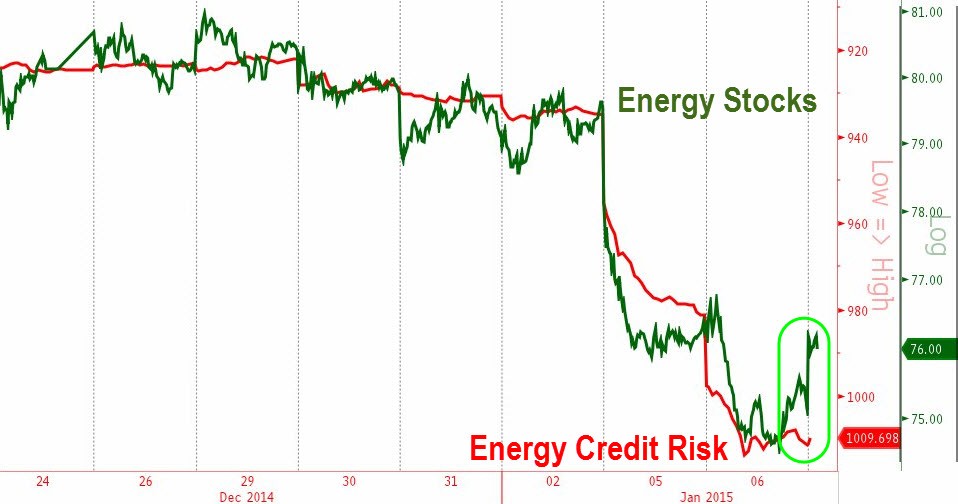Here s Why You Should Buy Bonds and Energy
Post on: 16 Март, 2015 No Comment

Recent Posts:
Heres Why You Should Buy Bonds and Energy
Over the previous six years, the stock market is not the only thing that has gone up. Total U.S. debt has catapulted from roughly $10.5 trillion give or take $100 billion to $18 trillion, which is a 70% increase in the country’s outstanding obligations since the start of 2009.
Perhaps ironically, I have spent the better part of 13 months explaining why our unsustainable debt burden, at least from an investor perspective, does not matter (at least not in the near-term). Foreign nations as well as foreign peoples are snatching up U.S. treasuries. American citizens are gobbling up government debt.
Heck, the Federal Reserve snagged nearly $4 trillion worth of bonds via electronic currency creation, putting a big fat dent in supply. It follows that as long as there is a perception that the U.S. government is one of the safest places for investment dollars, then euros, dollars, yen and yuan will find their way into the long end of the yield curve.
Most of my readers know, Vanguard Extended Duration ETF (EDV ) has been one of my top holdings for clients since December 2013. Yet, there are a variety of venerable vehicles for the ongoing uptrend in long-term government obligations, including iShares Lehman 10-20 Year Treasury Bond (TLH ), Vanguard Long Term Government Bond ETF (VGLT ) and PIMCO 25+ Year Zero Coupon U.S. Treasury Index ETF (ZROZ ).
Recognizing that stimulus in Japan, China as well as Europe results in additional demand for U.S. treasuries is not a bearish call on U.S. stocks. It is simply an acknowledgement that a 10-year German bund at 0.5% and a 10-year Japanese government bond at 0.3% makes the U.S 10-year at 2.0% look like a steal.
Certainly, the reasons for stock market giddiness are not entirely without merit. Consumer sentiment is at a seven-year high due in large part to rapidly declining gasoline prices as well as an upswing in employment opportunities. Both the service sector and the manufacturing segment of the U.S. economy show expansion, albeit at a slower pace than analysts had anticipated. And while some stimulus dollars from abroad continue piling into U.S. treasuries, a great big chunk also blazes a trail into U.S. equities.
The issue I grapple with most, however, is the misplaced notion that bad stuff cannot happen anymore. In essence, if an economy gets better, then one should invest in corporate debt and company stock. If an economy does not improve, a central bank will step in to stimulate the ailing economy with ultra-low rates.
And what should you do then? Invest in corporate debt and company stock. Buy, buy, buy… no matter what. Three years without a single 10% correction six yeas without a 20%-plus bear has sent the very notion of “being bearish” into tenacious hibernation.
In the chart below, the magnitude and the slope of the decline in bearishness is worthy of a second look. Is it any wonder that a few days of fear over oil price deflation or Greece exiting the eurozone is quickly dismissed by yet another V-shaped buying binge?
Now here’s where it gets even more interesting. According to FactSet. 87 companies in the S&P 500 have issued negative earnings outlooks a metric that far surpasses the five-year average of 74. Similarly, a meager 21 have raised guidance a metric that is well below its five-year average of 36. Were it not for a belief that indefatigable central banks can accomplish anything were it not for the disappearance of bearishness altogether might the figures have elicited some buyer trepidation?
Apparently not. The Dow Jones Industrial Average is up another 280 points.
Don’t get me wrong. I am long the assets that have held firm to their uptrends. For instance, my largest stock exchange-traded fund position for several years has been iShares MSCI USA Minimum Volatility (USMV ), primarily because it has not broken below its 200-day moving average.
On the other hand, on the outskirts of portfolios, there may be room for energy names that have fallen from grace. Call it contrarian. Call it value-minded. Call it whatever you would like. Yet, oil will not free-fall indefinitely, and $75 $85 per barrel will return soon enough.
Individual equity enthusiasts might want to check out U.S. Silica Holdings Inc (SLCA ), which announced additional stock buyback plans in late December. What’s more, as recently as October, SLCA received a #1 rating by Forbes Magazine as the “Best American Small Company.” ETF advocates might want to consider PowerShares S&P Small Cap Energy Portfolio (PSCE ).
You can listen to the ETF Expert Radio Show “LIVE”, via podcast or on your iPod. You can follow me on Twitter @ETFexpert .
Disclosure Statement: ETF Expert is a web log (”blog”) that makes the world of ETFs easier to understand. Gary Gordon, MS, CFP is the president of Pacific Park Financial, Inc.. a Registered Investment Adviser with the SEC. Gary Gordon, Pacific Park Financial, Inc. and/or its clients may hold positions in the ETFs, mutualfunds, and/or any investment asset mentioned above. The commentary does not constitute individualized investment advice. The opinions offered herein are not personalized recommendations to buy, sell or hold securities. At times, issuers of exchange-traded products compensate Pacific Park Financial, Inc. or its subsidiaries for advertising at the ETFExpert website. ETF Expert content is created independently of any advertising relationship.
investorplace.com/2015/01/heres-buy-bonds-energy/.














